Intel Haswell To Allow For Base Clock Overclocking On Non-K Models
Ryan Martin / 12 years ago
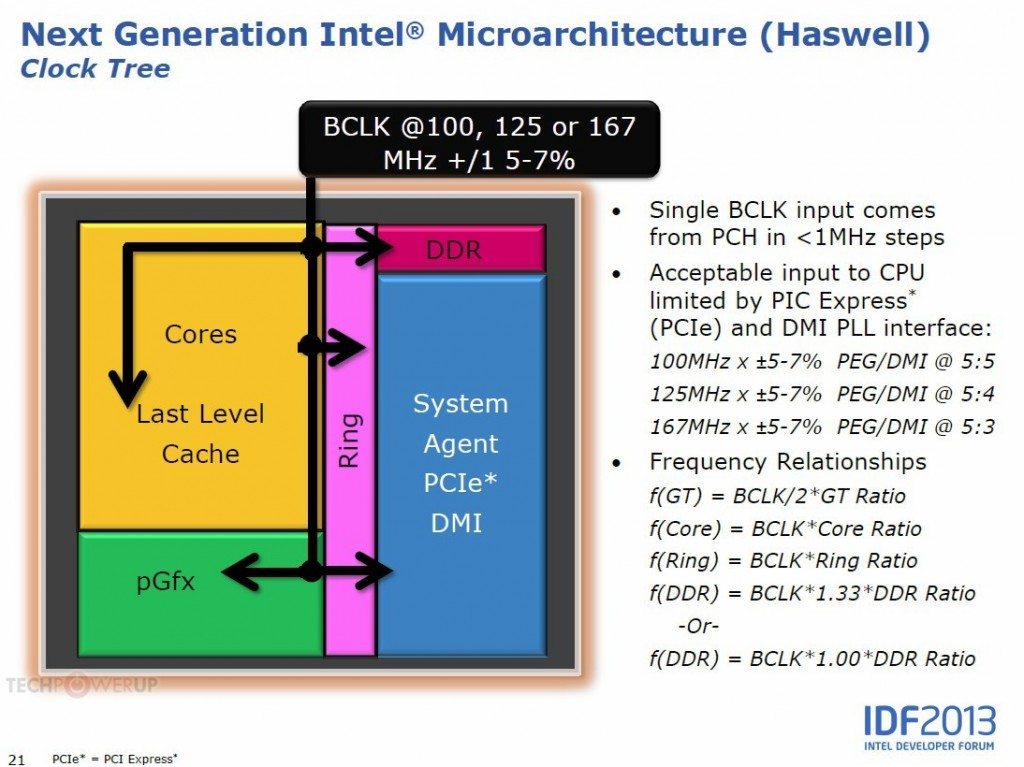
Ever since Sandy Bridge came to market Intel’s processors had been limited in overclocking terms, for overclockers the only way to achieve an overclock was via multiplier changes and a default base clock speed of 100MHz. In most cases the base clock would only budge 1-3MHz meaning overclocking via the baseclock was near-impossible. This was a drastic change over previous Intel processors where most of the overclocking was done via the base clock and unlocked multiplier processors only went up to 40X (like the i5 655K for example). It looks like Intel is trying to bring some of that base clock flexibility back and this is good news for everyone because it means overclocking on non-K models should now be possible again.
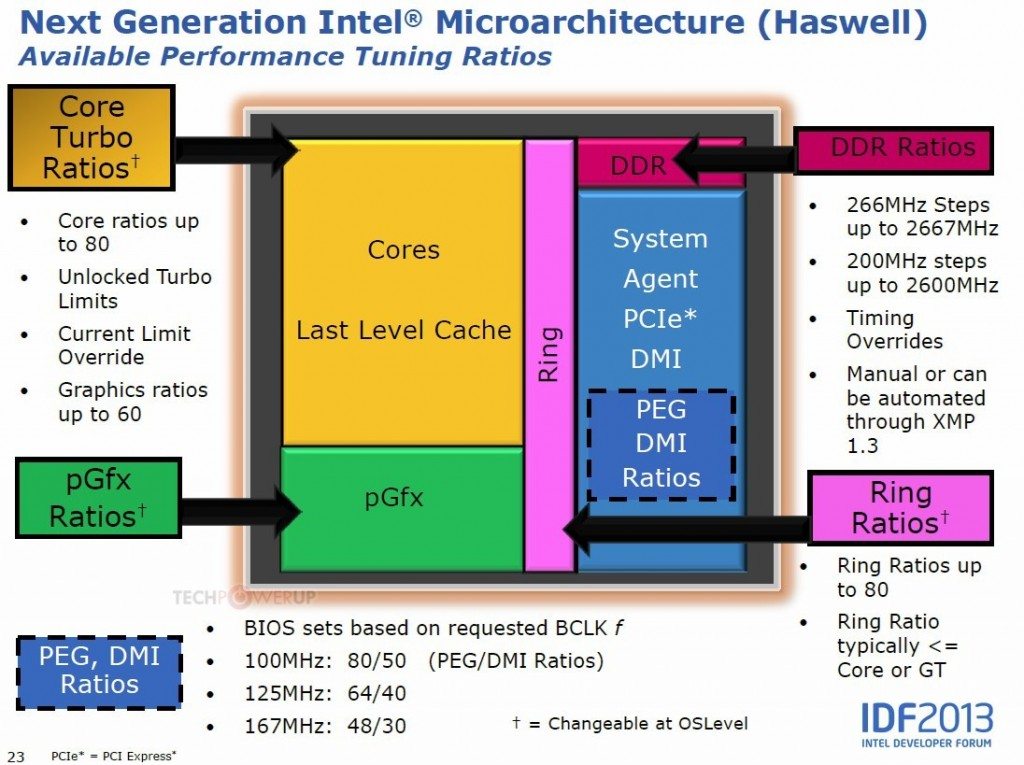
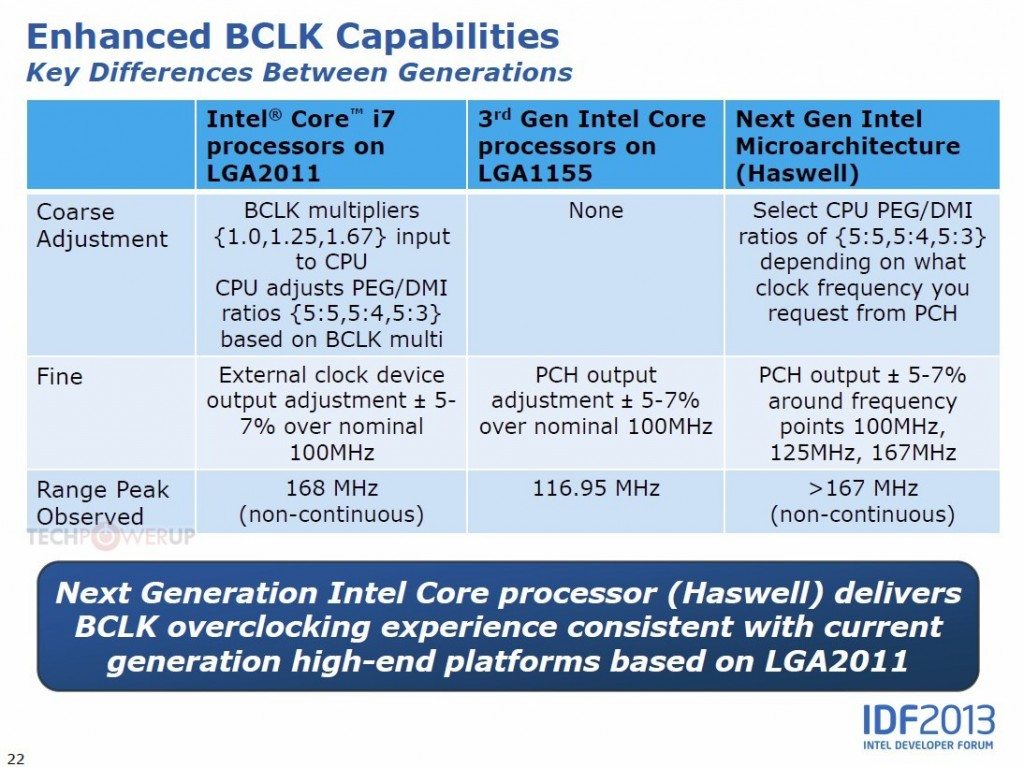
Haswell will be similar to the Core i7 3820 of Sandy Bridge-E, and similar to the Sandy Bridge-E platform in general, as it will allow both traditional multiplier based overclocking and base clock overclocking when multipliers are locked in. You will be able to tweak your baseclock by 5-7% at three different presents – 100MHz, 125MHz and 167MHz. The reason why Intel quotes only 5-7% variance at those presets is because too much BCLK changing can cause instability in the PCI-Express and DMI-PLL.
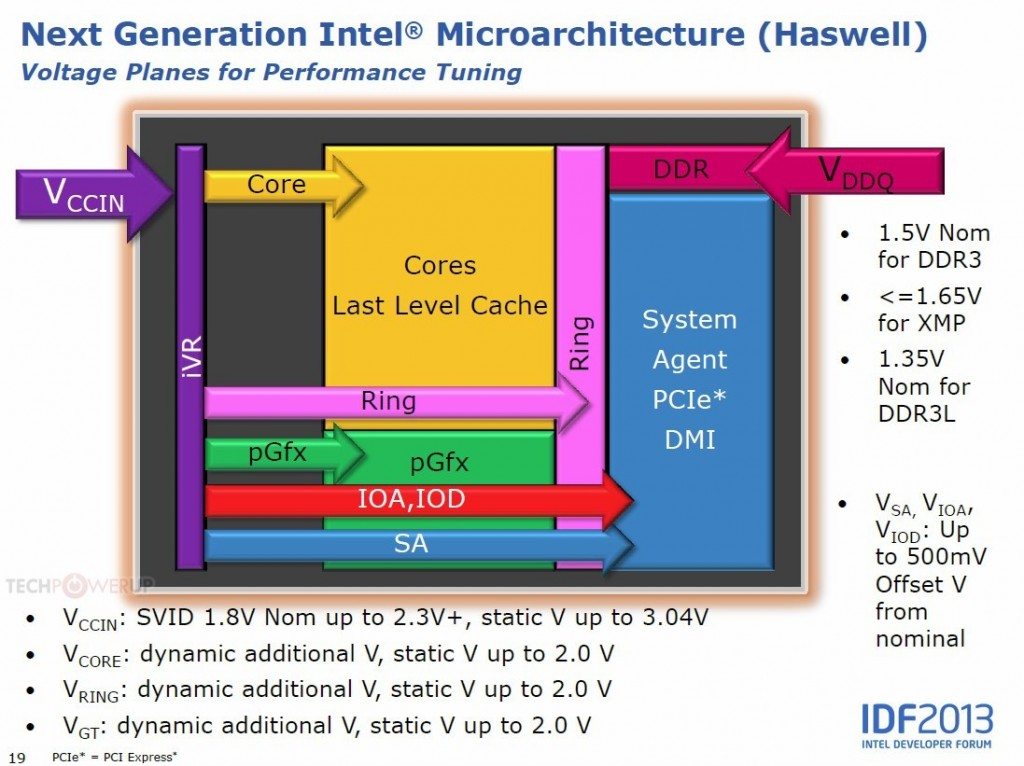
Another unique feature of Haswell is its integrated voltage regulation iVR which means that the ability to tweak voltages and power options is inherently present on the CPU. Power delivery and VRM options will still vary by motherboard but the way in which you access and tweak them is now standardised.
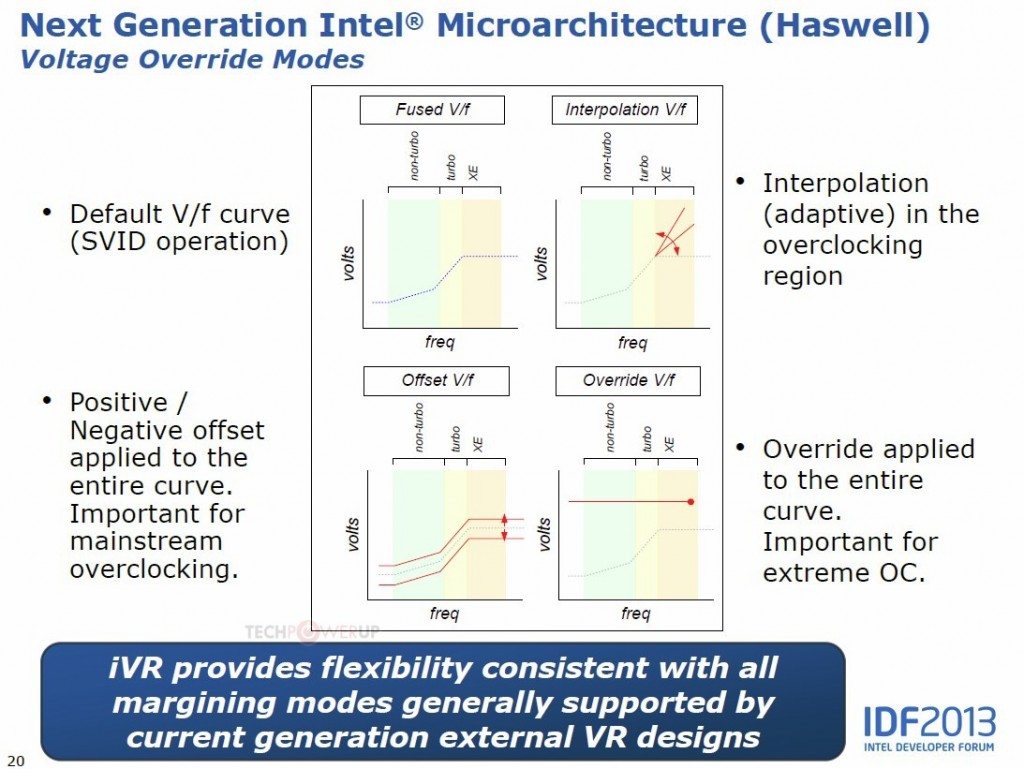
The rest of the voltage options are described well by TPU:
“The iVR design ensures that motherboards feed processors with just two power domains, vCCIN, and vDDQ. iVR takes input from vCCIN, and regulates it to vCORE (feeds CPU cores), vRING (feeds the ring-bus that interconnects everything on the processor), vSA/vIOA/vIOD (feed system agent or integrated-northbridge, and certain other uncore components), and vGT (feeds the integrated graphics processor). Ranges for these domains are detailed in the slide below.”
What are your thoughts on Intel changing the overclocking game on Haswell? Are you excited about being able to overclock non-K models?



















